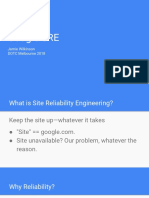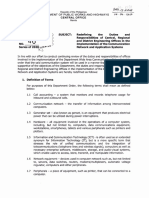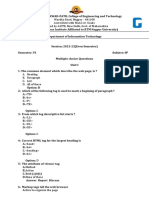0% found this document useful (0 votes)
105 views3 pagesSRE SRE: Site Reliability Engineering
The document discusses site reliability engineering (SRE) as a paradigm shift in service management. SRE aims to improve reliability, accept failure as normal, reduce tedious operational tasks, implement monitoring and metrics, set service level indicators and objectives with error budgets, and focus on automation to continuously improve systems over time.
Uploaded by
Pallab SarkarCopyright
© © All Rights Reserved
We take content rights seriously. If you suspect this is your content, claim it here.
Available Formats
Download as PDF, TXT or read online on Scribd
0% found this document useful (0 votes)
105 views3 pagesSRE SRE: Site Reliability Engineering
The document discusses site reliability engineering (SRE) as a paradigm shift in service management. SRE aims to improve reliability, accept failure as normal, reduce tedious operational tasks, implement monitoring and metrics, set service level indicators and objectives with error budgets, and focus on automation to continuously improve systems over time.
Uploaded by
Pallab SarkarCopyright
© © All Rights Reserved
We take content rights seriously. If you suspect this is your content, claim it here.
Available Formats
Download as PDF, TXT or read online on Scribd
/ 3





























































































